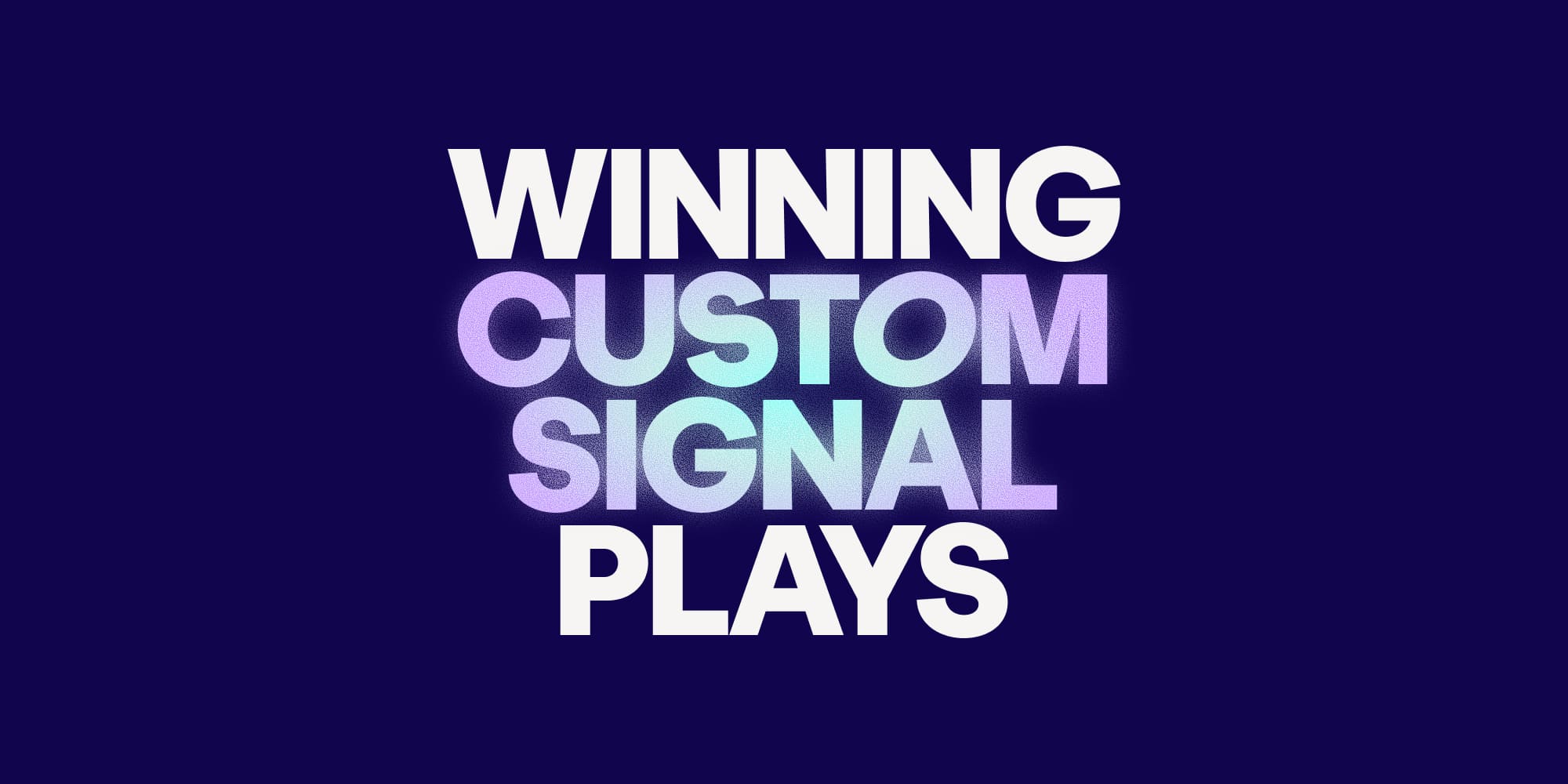Sales Engagement Platform vs. CRM: Why both are essential
•
September 5, 2024
.jpg)
Winning at sales means winning at the two “p”s: profitability and productivity.
To work efficiently and effectively, your team needs to be leveraging the right tools. And whilst most sales organizations rely on Customer Relationship Management (CRM) systems - like Salesforce or HubSpot - to centralize their prospect data, these platforms alone aren’t necessarily enough to make deals happen.
Enter sales engagement platforms. These innovative tools fill the gaps left by traditional CRMs, supercharging revenue efforts through automation, deal analysis, and streamlined communication.
Let’s explore the distinct roles of CRM systems and sales engagement platforms in a little more detail and see how integrating both can accelerate your deal velocity and drive sales success!
Sales engagement platform vs. CRM: key differences
What is a sales engagement software?
A sales engagement software is designed to help sales teams manage and automate their outreach efforts across various channels. Whether it's email, phone calls, or social media, sales engagement platforms enable your team to interact with prospects and customers more efficiently and effectively.
At its core, a sales engagement platform focuses on communication and automation. It allows sales representatives to send messages, schedule follow-ups, and track engagement in real-time.
These platforms often include more advanced strategic features like personalized cadence management, sales analytics, and integration with CRM systems too. This integration is crucial because it allows your outreach sales engagement platform to work in harmony with your existing CRM, ensuring that all customer interactions are logged and accessible in one place.
The ultimate goal of a sales engagement platform is to streamline your sales outreach, increase efficiency, and ultimately improve sales outcomes. The best sales engagement platforms will take care of repetitive tasks and provide valuable sales insights so your team to focus on what matters most: building relationships and closing deals!
What is a CRM platform?
A CRM platform serves as the backbone of your sales and customer management processes. It’s a software solution that centralizes all customer data and interactions, providing a comprehensive view of your customers and prospects.
Think of your CRM as a repository of essential information. It stores details like contact information, purchase history, and communication records. This data is critical for nurturing relationships, enhancing customer satisfaction, and driving long-term loyalty. A CRM system like Salesforce or HubSpot is often described as your “system of record,” where all customer-related data is stored and organized.
However, while a CRM platform excels at managing and storing data, it’s not necessarily equipped to handle the dynamic and proactive aspects of sales outreach. That’s where sales engagement software comes into play.
While your CRM system keeps all your customer data in one place, sales engagement software actively uses this data to drive interactions with prospects and customers. It’s the tool that bridges the gap between having information and taking action, ensuring your sales team can engage with leads at the right time, with the right message, across the right channels.
CRM vs. sales engagement platform: applications and use cases
Here's a handy overview of the key functions and uses of CRM and sales engagement platforms:

Benefits of using a sales engagement platform vs. CRM
As tools have evolved, the terms "CRM platforms" and "sales engagement software" have been used more and more interchangeably. Strictly speaking however, they serve distinct purposes in the sales process, and the better you understand their respective benefits, the easier it will be for you to find the tools you need!
Benefits of top sales engagement platforms
Sales engagement platforms like Amplemarket include a range of features designed to help sellers put their strategies into practice, including a prospecting database, LinkedIn extension for social selling, multichannel sequencing, AI-powered workflow automation, prospect intelligence, deliverability support, and much more.
Here are some of the top benefits of sales engagement platforms:
- Outreach automation: One of the biggest benefits of top sales engagement platforms is their ability to automate repetitive tasks, such as sending follow-up emails, scheduling calls, and managing outreach cadences. This automation allows your sales team to focus more on selling and less on tedious, error-prone administrative tasks.
- Multi-channel engagement: Sales engagement platforms enable you to interact with prospects across various channels—email, phone, SMS, and social media—all from one centralized location. This multi-channel approach makes your outreach efforts more agile and comprehensive, maximizing your chances of engaging leads wherever they're most active.
- Real-time analytics and insights: These platforms often provide detailed analytics on the performance of your outreach campaigns. You can track open rates, response times, and other key metrics so your team can pick out best-performing plays and pinpoint areas for improvement.
- Enhanced collaboration and coaching: With built-in tools for collaboration like template-sharing or account-wide resources, sales engagement platforms make it easy for teams to secure their best practices and for managers to provide targeted coaching.
Benefits of CRM platforms
Conscientious teams understand the importance of keeping their CRM up to date with the right contact information and sentiment data because it can inform virtually all of their other sales and marketing efforts.
By connecting your sales engagement platform with your CRM, you unlock a number of benefits:
- Integration of customer and prospect data: A CRM system acts like an intelligent Rolodex, storing a wealth of emails, contact details, and interaction history in one place. This data is automatically synchronized across a centralized dashboard so all teams have seamless access to up-to-date information.
- Streamlined task management: CRM platforms empower teams to schedule and allocate tasks across various departments within the company. These tasks, often centered around customer and prospect interactions, might include follow-up reminders, check-ins, trainings, or other activities designed to optimize the customer experience whilst keeping your entire go-to-market team aligned.
- Generation of insightful reports: By analyzing the sales data captured within the CRM, businesses can generate reports that inform revenue strategies. These reports can be very useful when it comes to improving the customer experience by identifying trends, areas for improvement, and opportunities for growth.
CRM as a system of record vs. sales engagement platforms as a system of action
Your CRM is your central source of pipeline truth. Sales engagement platforms are what you use to keep your pipeline filling and flowing.
But whilst these concepts are distinct, you’ll see why integrating both tools together is crucial for optimizing sales activities and driving revenue growth:
- CRM as a system of record: Your CRM is the backbone of your sales operations—a repository for all customer-related data. It stores everything from contact details and purchase history to interaction logs, making it your primary source of truth. This system of record is invaluable for understanding your customer base, segmenting your audience, and ensuring that all customer-facing activities are informed by accurate and up-to-date information.
- Sales engagement platform as a system of action: On the other hand, a sales engagement platform functions as a system of action. While your CRM holds the data, your sales engagement platform is where the action happens—automating outreach, managing cadences, and tracking the effectiveness of your sales efforts. It’s the tool that transforms your CRM data into meaningful interactions, ensuring that your sales team can engage with prospects and customers in a timely and personalized manner.
How to integrate your CRM and sales engagement platforms for sales success
So if both your CRM and sales engagement platform are critical for managing your pipeline, how do you get the tools to work well together?
To start with, you need to make sure you choose a sales engagement platform that aligns well with your CRM!
Here are some things to consider when you’re scoping out new sales engagement tools:
1. Engage CRM support early
Inform your CRM administrator about your plans to evaluate sales engagement solutions. Request a list of integration requirements and specifications to facilitate the decision-making process. Involving your CRM support team early on ensures smoother coordination and alignment and prevents unpleasant surprises or major blockers later on!
2. Assess your current tech stack
Compile a comprehensive list of your existing sales technology vendors. This inventory will help you identify redundant tools that can be eliminated and non-negotiable ones that need integration with your chosen sales engagement platform.
3. Define sales process steps
Plan out workflows from your CRM and other applications, ensuring seamless data flow into your sales engagement platform. This proactive approach enables you to capture granular analytics and streamline processes effectively.
4. Collaborate with prospective providers
Share your tech vendor list with potential sales engagement providers to gauge their level of support and compatibility. This collaboration ensures that the selected platform can seamlessly integrate with your existing infrastructure.
While CRM systems and sales engagement platforms serve distinct roles in the sales process, integrating the two means you can dive deeper into your data to accelerate deal velocity, enhance customer relationships, and drive revenue growth more effectively.
If you’re a sales engagement platform that integrates seamlessly with HubSpot, Salesforce, and many other CRMs, check out Amplemarket!
You can learn more about Amplemarket's native HubSpot integration here.
Subscribe to Amplemarket Blog
Sales tips, email resources, marketing content, and more.


.jpg)







